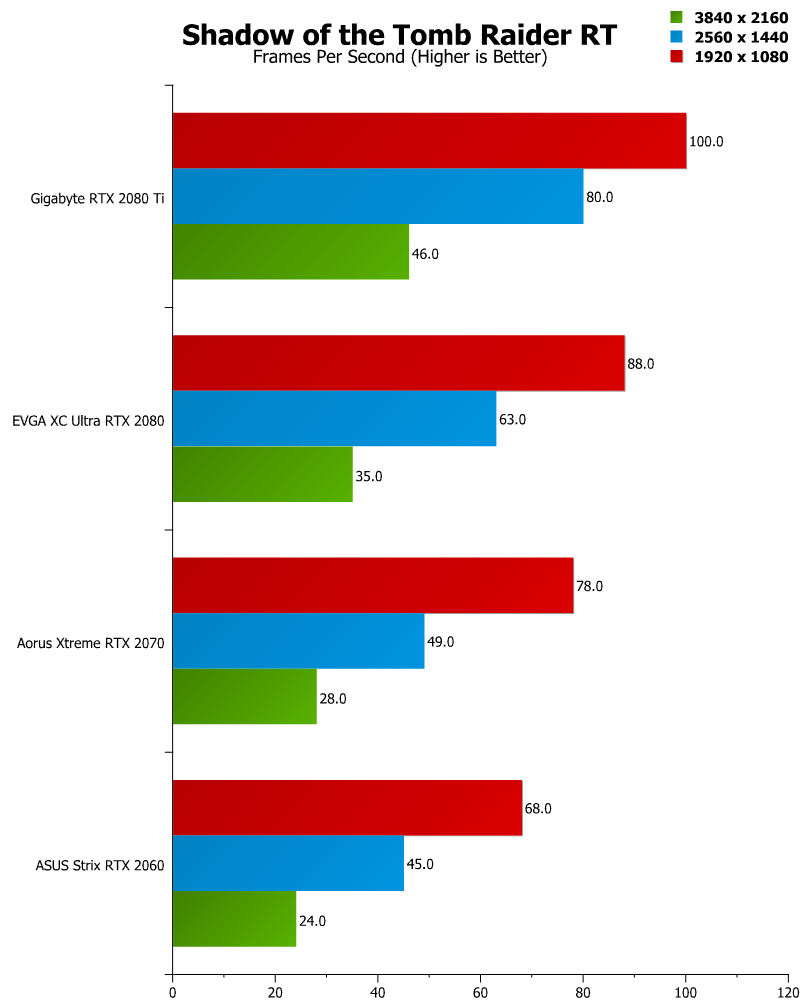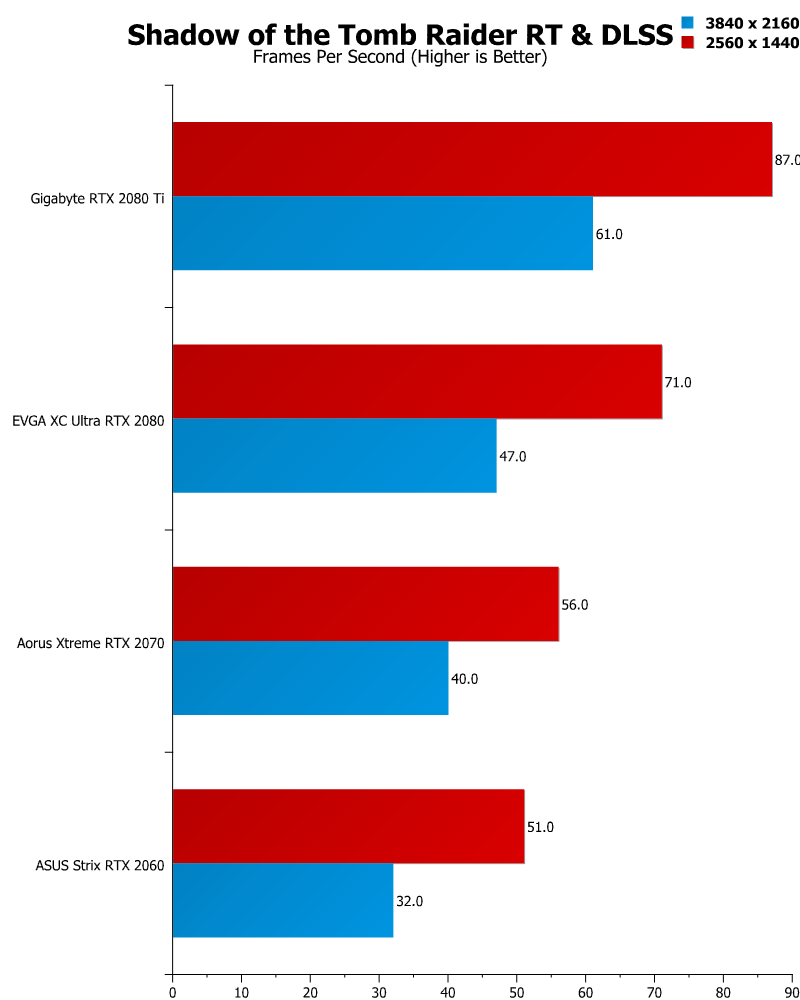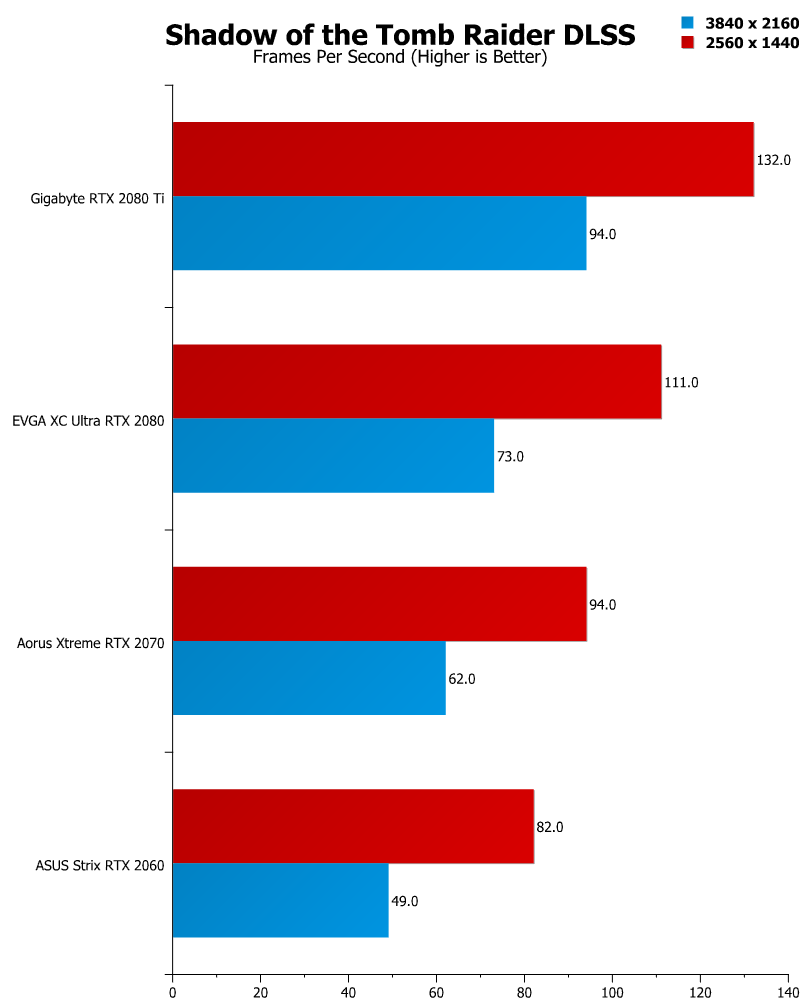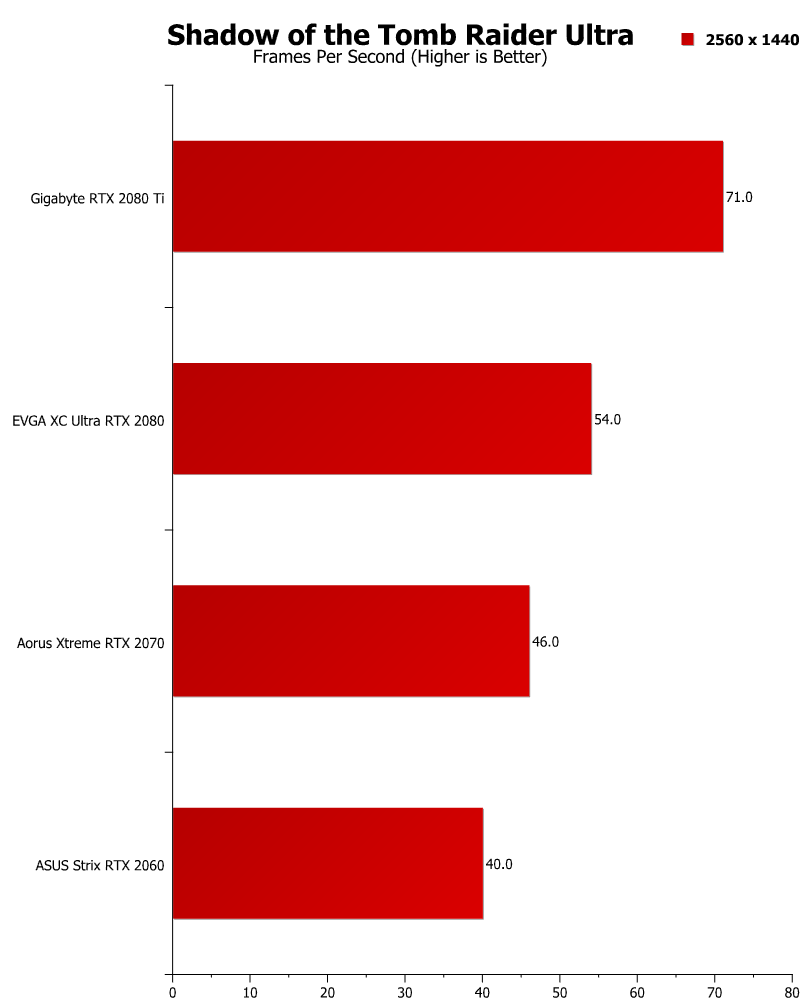Shadow of the Tomb Raider DXR Performance Analysis
Peter Donnell / 6 years ago
1080p (Full HD), 1440p (2K), and 2160p (4K)
As one would expect, the RTX 2080 Ti smashed through the testing with confidence at 1080p, 1440p, and 2160p. Even at 4K it was able to maintain an 80 FPS average, which is more than enough for silky smooth gameplay. Of course, this is with the high profile and RTX off. We’ll get to the Ray Tracing and DLSS stuff in a moment.
The more affordable RTX 2070 on the other hand, was much more adept at 1080p and 1440p than it was at 4K. Of course, the same is true of the RTX 2060, which only scored 44 FPS at 4K. That’s still playable, but as I’ve said before, it depends if you foam at the mouth when someone mentions framerates below 60 FPS… You know who you are, ha!

Ray Tracing
Dialling up the shine and shadows with Ray Tracing certainly makes the game look impressive. However, it really takes the wind out of the sails of even the bigger and more expensive GPUs. When you understand just how insanely complex RT processing is though, I can’t help but be impressed than anything about 1 FPS is possible these days, amazing stuff.
For 4K, the 2080 Ti dropped down to just 46 FPS, almost half of the 80 FPS with it turned off. However, both the RTX 2080 and RTX 2080 Ti scored above 60 FPS at 1440p, which is fantastic to see; only 1.6% of Steam users even have a 4K monitor, 1440p and 1080p are significantly more popular.
For 1080p, obviously the bigger cards did fine here. Overall though, all the cards smashed 1080p, and 1440p didn’t slow down too much either. 4K is an enthusiast game, and the RTX 2080 and up is the way forward here. The RTX 2070 can easily be tuned for 1440p, which the RTX 2060 is best suited for 1080p with RT on.

Ray Tracing and DLSS
So the same tests as above here, however we enabled DLSS (Deep Learning Super Sampling). As I said on our methodology page, we dropped DLSS for 1080p, it either doesn’t work or just looks like dog food. However, it’s much more useful at 1440p and 4K.
The RTX 2080 Ti for example went from 46 FPS to a magical 61 FPS at 4K. Meanwhile, the RTX 2070 went from 49 FPS to a much more impressive 56. That’s VERY close to 60 FPS, and could easily be tweaked to fit. The gains are certainly there should you need them, as subjective as this feature may be, it does work.

DLSS Only
Perhaps you like RTX, you love the power, but rather than Ray Tracing, you want to simply boost FPS at whatever resolution? Then you’ll be happy to see DLSS can be used on its own. This is unlike Metro, where DLSS was tied to Ray Tracing. The performance gains are pretty decent for the most part. The RTX 2080 Ti gained 14 FPS at 4K. However only 1 FPS at 1440p, suggestion the feature didn’t work at this resolution on this card.
The RTX 2070 went from 51 FPS to 62 FPS at 4K also, making that fast enough to pass the golden 60 figure. Even for those of you gaming on high refresh rate displays, being able to get the RTX 2080 Ti to 132 FPS will reap rewards for those 144 Hz monitors. Plus, this is at high settings, so no need to drop to medium for those FPS gains.

ULTRA
So with each one of these performance analysis we do, I like to throw in something unique to each. Given the… OK ish performance of 4K, I decided 1440p was the way to go here. So I dialled in each card with Ultra graphics and Ultra Ray Tracing. DLSS turned off, and decided to see what happened.
Amazingly, only the RTX 2080 Ti got above 60 FPS, 71 FPS to be exact. The RTX 2080 came close at 54 FPS. That’s 9 FPS fewer than we had with High settings. The more affordable cards did struggle, but hey, that was to be expected.




















